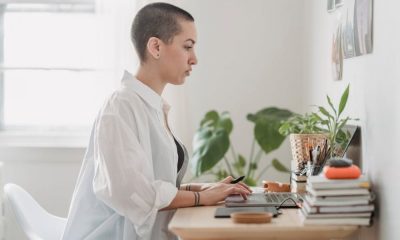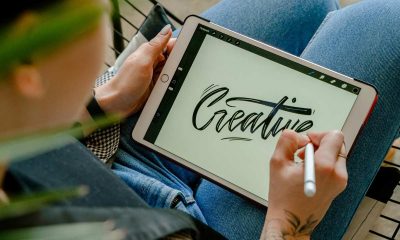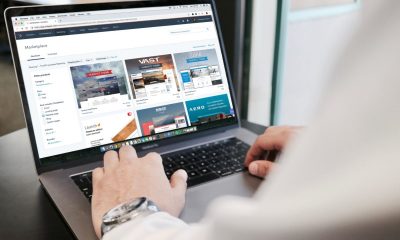Business
We Used 99designs For Logos: Here’s Our Review
Published
5 years agoon
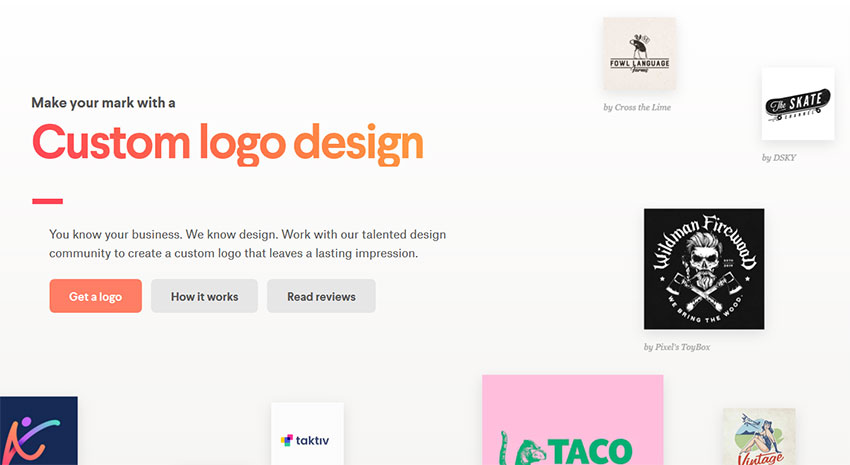
What is it like to use 99designs? We’re going to go through the process of creating a design contest from start to finish to show you what the entire experience is like, so you can decide for yourself if 99designs is for you. For this 99designs review, we’re going to follow all instructions given and document each step of our journey for you to see below.
For this test project, we’re going to submit a contest for Owner’s Mag logo to see if 99designs can interpret a better logo for us. The chances of me getting this approved and having the CEO change the logo is practically 0, but this will be a fun project that everyone in our office can contribute feedback to. It couldn’t hurt, right?
1. Creating our design project

We went ahead and searched “Logo” and went through the process of creating the logo project. When selecting the business category, surprisingly there’s nothing related to digital publication, news, or publisher there. We went ahead and chose “Internet” as our category.

2. Choosing a name
Now it’s time to name our project. We’re going to call this one “Owner’s Mag Logo Design”. Not sure if I’ll ever get the approval to change the logo, but it’ll be a fun project that everyone at the office can give input on.

3. Types of logo
Logos come in all different shapes, themes, and types. They can be just a word logo, icons, abstract, or something unique with a mascot. Here’s where you can tell the 99designers what type of logo you want.
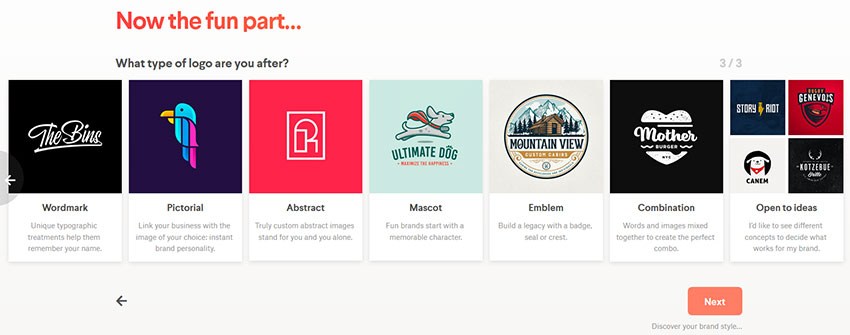
4. Choosing a style
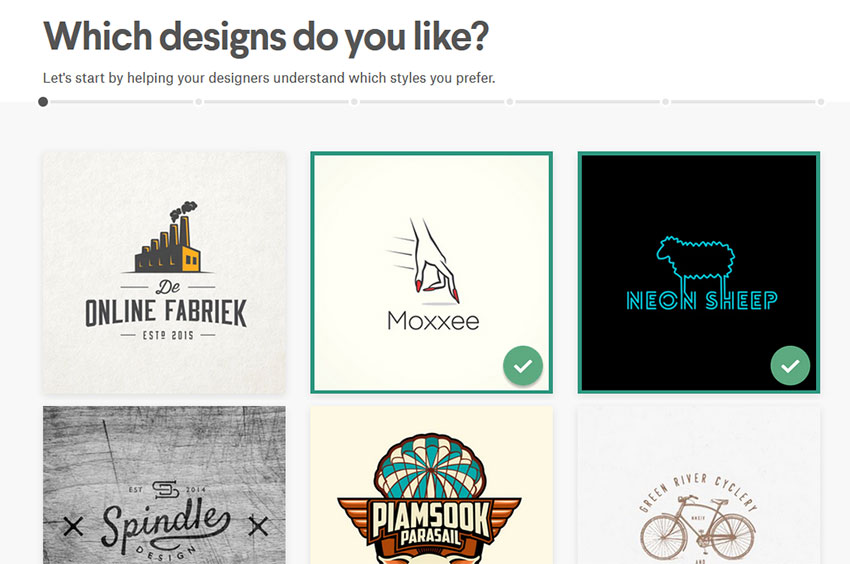
I like this section a lot. Sometimes it’s difficult to actually describe what you want. Here, you can browse through a long list of logo designs that cover a wide spectrum of styling. Select the ones that best fit your taste and it’ll give the 99designers a better idea of what you want.
I went ahead and chose a few text-focused logo, since Owner’s Mag is a text-only logo. The selected examples in the screenshot above aren’t the ones I chose.
5. Brand Style Meter
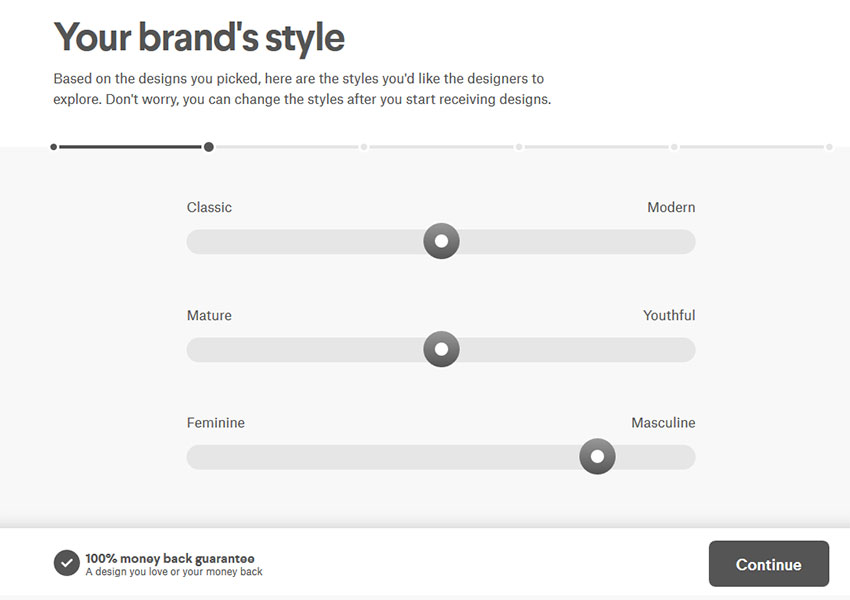
I’ll be honest, this section is a bit weird for me. On this page, 99design asked me to explain the style I want using different sliding scales. There’s more than the 3 listed in the image above. I personally had a hard time deciding if Owner’s mag logo should be “Classic” or “Modern”, “Mature” or “Youthful”. Femine vs Masculine I can work with. But the other categories aren’t intuitive for me.
6. Choosing Colors

Now it’s time to pick our color preferences. I stuck with “Reds”.
7. Writing project brief
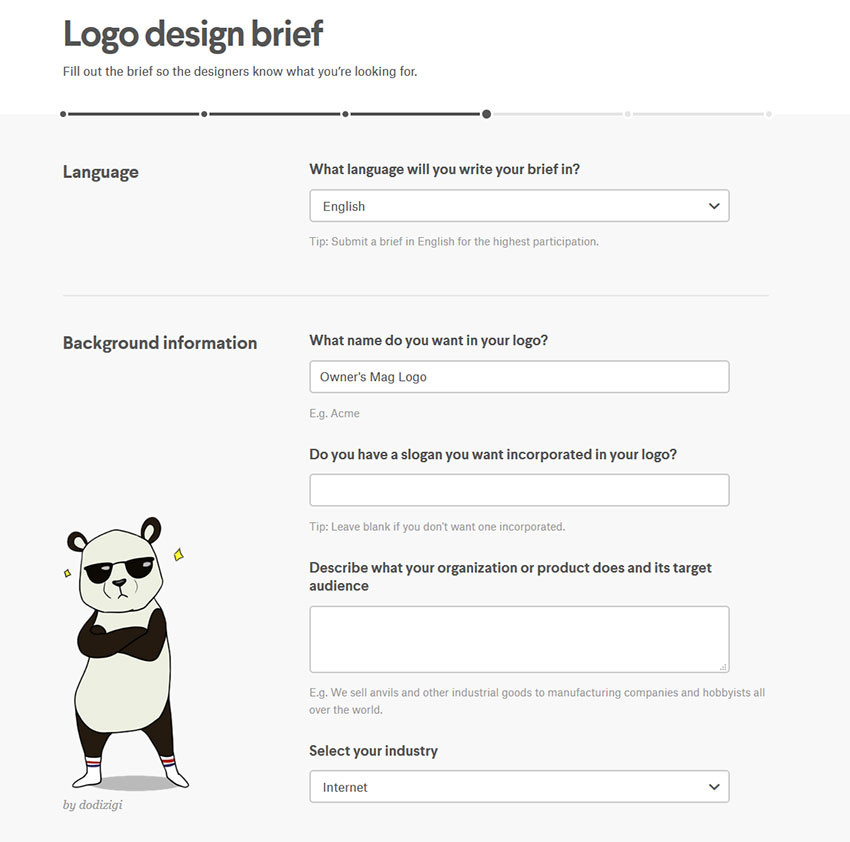
Filling out the project brief didn’t take too long. The questions were straight forward and all makes sense. It is odd that the project brief itself is this far down the process.
8. Choose your package
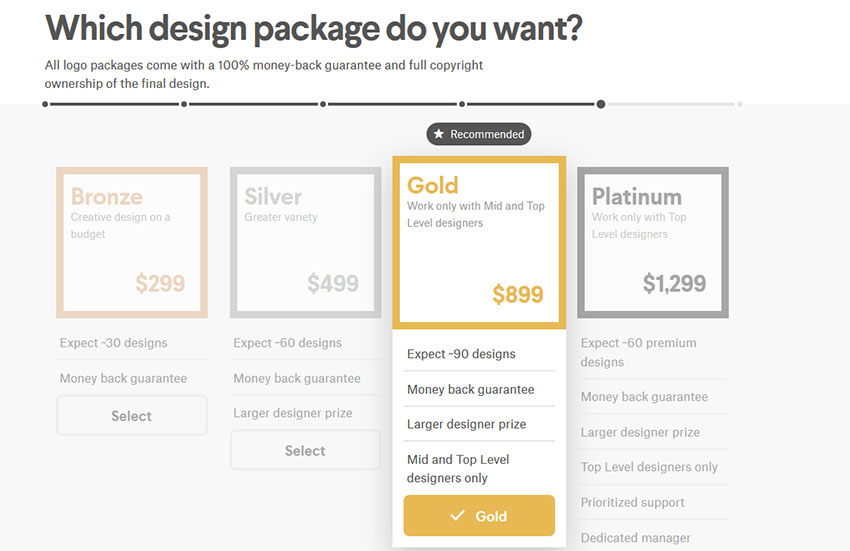
So far, we haven’t paid 99designs anything. Now it’s time for us to pick a tier for our plan. Although the Logo starts at $299, that’s actually for the Bronze tier. The higher tier you go, the more submissions and higher quality the work will be. Or at least that’s what 99designs promise.
For this, we chose the Silver $499 plan. We’ll be expecting about 60 designs to be submitted with this package.
9. Add-ons
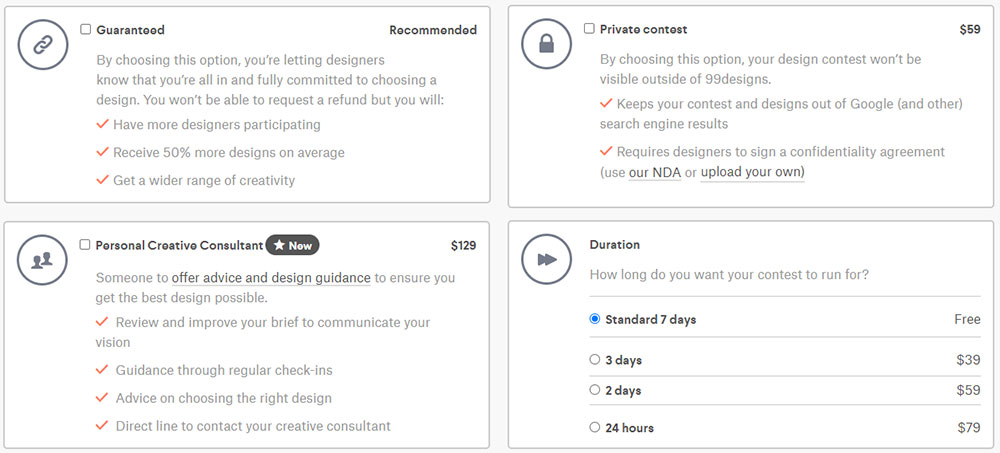
In addition to the $499 we’re paying for the Silver tier, 99designs will upsell us for a few things. Some of these I think makes sense, others I felt should be included in the price I’m paying.
Personal Creative Consultant ($129) actually looks like customer support to me. I’m not a designer. Of course, I will need some help through this process. I felt like this should’ve already been included in the price instead of being a $129 add-on.
Guaranteed doesn’t cost anything. But it will null your money-back guarantee. This ensures the designer WILL get paid if they make it to the final round. Because of 99designs’ pay structure, this makes your project much more appealing to designers and more will likely submit drafts if you opt out of their guarantee.
Private ($59), this came as a shocker. I didn’t know this would even be public. Why my project is even open to the public in the first place is beyond me. This doesn’t feel right. Paying $59 just so 99designs keep my designs private seems like a scare tactic for me to cough up more money. Not a fan.
Duration lets you pay a bit more for faster delivery. For this, I feel the prices are fair and it’s typical to pay more for expedited work anyway. You can pay $39 for 3 day instead of 4 day delivery, $59 for 2 days, and $79 for 1 day.
9. Complete! Now we wait…
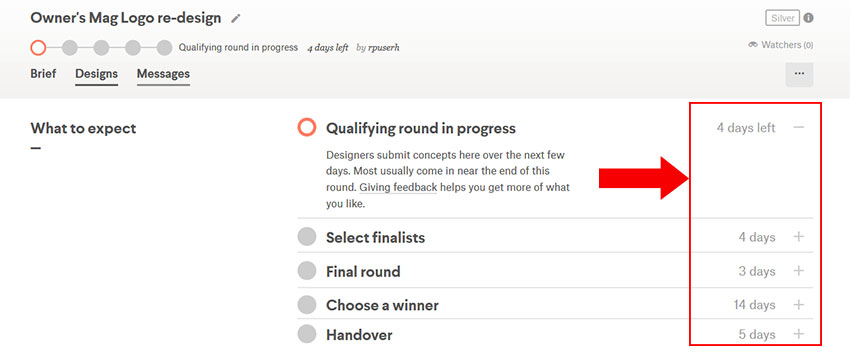
I opted to not purchase any add-ons for this review. Once paid, we’re redirected to 99designs’ dashboard where we can see the estimated timeline for the project. From today, it’ll take about 4 days for all of the designs to be submitted. Each day some designers will submit their work and on the final day, the round will be closed and we have 4 days to pick finalists.
The Designs Are In!
First off, I was very disappointed that we only received 17 designs instead of the promised 60. I contacted 99designs support about the issue and they claim that they don’t guarantee “60”, even though their pricing tiers clearly listed “Expect ~60 designs”.
Maybe the 17 designs we received are good? I’ll let you be the judge of that before we give our verdict.
Here are the 17 designs that 99designers submitted to us after 4 days.
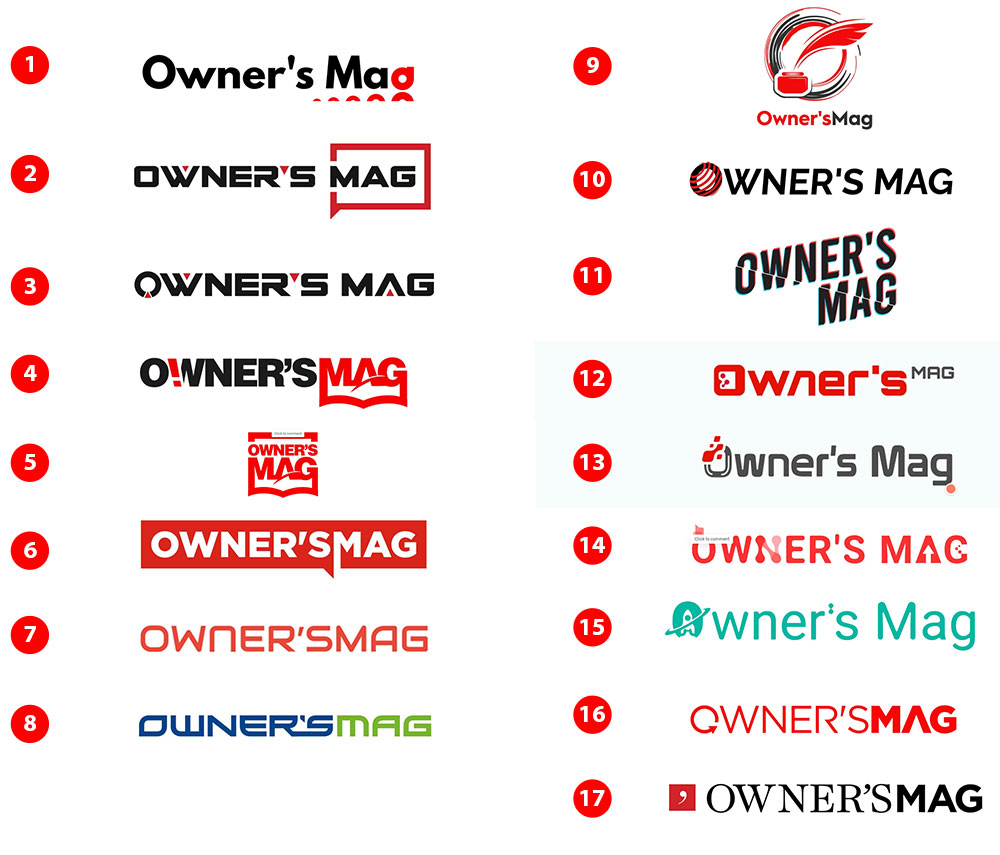
What does our office think?
We passed the designs around our office to get some initial thoughts. Most thought the designs were random and not aligned with any of the directions given. Some look templated. Others look like they just slap a random icon in front of the text and call it a logo.
Overall, none of us were impressed by the results thus far. We eventually picked #6 to give feedback just to move the process along, not because we love the design. We felt let down that only 17 versions were submitted since 99designs promised we’d get around 60 designs to choose from.
We submitted our revisions and now wait for our designer to spin something back to us.
4 days later…
We received new versions of logo #6 within about 3-4 days. Personally I wasn’t happy with the new versions, but I shared the new designs with the office. You can probably guess how we all felt about the new drafts. Results…were disappointing and not what we had suggested. At this point, we didn’t feel compelled to give any further instructions or move the project to the final round.
We’re not happy
We decided not to continue the project given we’re not happy with any of the drafts so far. Even revisions were still so far off what we would even accept. I understand graphic design is subjective, and that sometimes you just have a difficult client. I assure you, we’re not that difficult and was looking for a very simple logo.
It was hard for us to justify even moving to the final round given the designers barely followed our directions. We specifically asked them to design the logo using our RED, and some of them ignored it completely. We asked them to NOT use any icons and just keep it text-based, yet there were logos with random icons.
Getting a Refund
Our experience could be a unique case and your experience could be much more pleasant. We eventually asked for a refund and was met with another obstacle. You can’t get a refund on the website, they request a call to speak to you to “verify” your identity before releasing your refund.
This is an annoying step clearly put in place just to discourage refunds. I oblige and got on a call with a representative. The rep was understanding and didn’t try too hard to sell me, which I appreciated. Our refund was promptly processed afterward.
Final Verdict
Our experience with 99designs has been mixed. I like how intuitive the website is and how easy it was to get your logo project started. The biggest let down were the number of submissions we received (17 instead of the promised 60) and the quality of each design. You can judge for yourself. Looking at the logos submitted, I didn’t feel like we got even intermediate level designers. These just felt rushed, patched together, and overall unpolished work.
Giving revision was difficult because most of the designs were so far off base. I didn’t know where to start, except tell the designer to re-read my project brief and start over.
Overall, it wasn’t the best experience for us. We would’ve gladly paid an agency or a freelancer the same amount and get more dedicated care and attention to produce 2-3 good logos instead of 17 poorly design random logos.
You may like
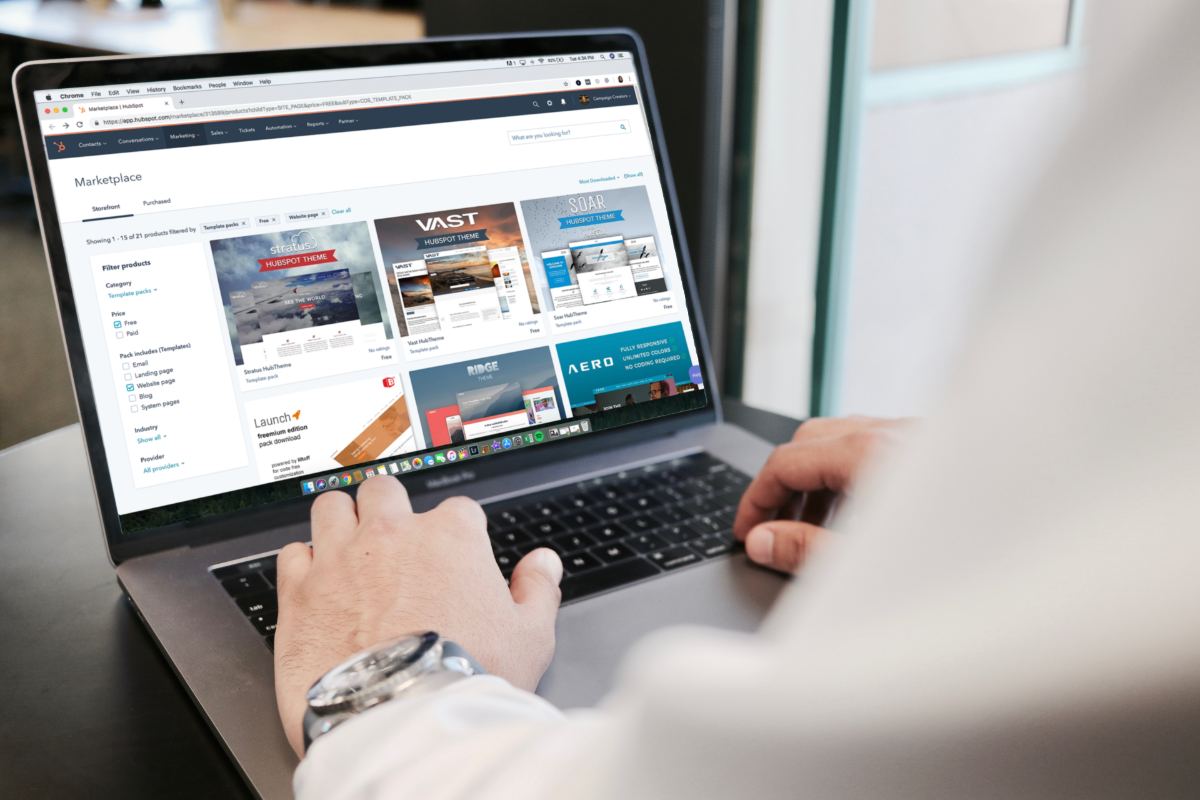
Did you know that given 15 minutes of content, 66% of people would rather see something stunning and visually appealing than basic and boring? Therefore, how you present your website will determine if people stick around or leave which means, they won’t become your customers. Thus, it’s important to find the right website design company so you can benefit in the long run by boosting your traffic and appeal.
This article will explore some of the best website design companies on the market. We’ll go over the pros and cons of each website graphic design services to find what’s best for you and what’s sure to please those visiting your site.
1.Penji
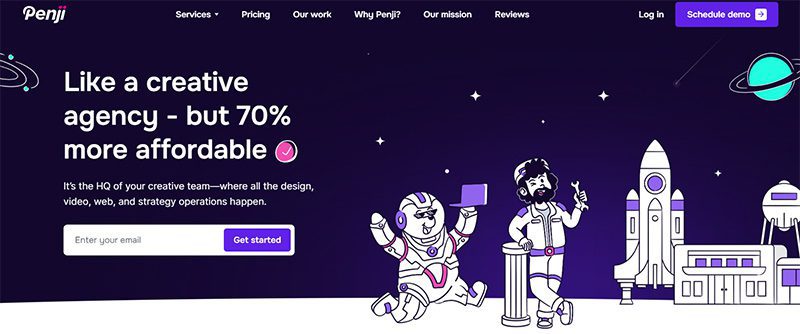
First up, is Penji. It’s one of the top-reviewed website designs companies Penji combines an unlimited request graphic design service to provide customers with everything they need from website graphic design services.
Pros:
- Hires Top 2 Best Designers
- Unlimited Requests
- Fast Turnaround (24-48 hours)
- Affordable (monthly prices start at $499/mo)
- All Kinds of Services
Cons:
- Not One-Time Changes: If you’re looking for a one-and-done redesign for a regular website, this may not be the one for you.
2. Toptal

The second one is Toptal. This is deemed one of the best website design firms if you’re a business requiring completely custom and quality designs. Toptal focuses on a tailored experience so you can get the best website possible from handpicked top designers for a personal touch!
Pros:
- Top-Tier Talent (Top 3% Designers/Developers)
- Fully Custom Designs
- One Dedicated Designer
Cons:
- Costly (Starts at $$80–$250/hr depending on designer)
- Longer Projects
3. 99designs
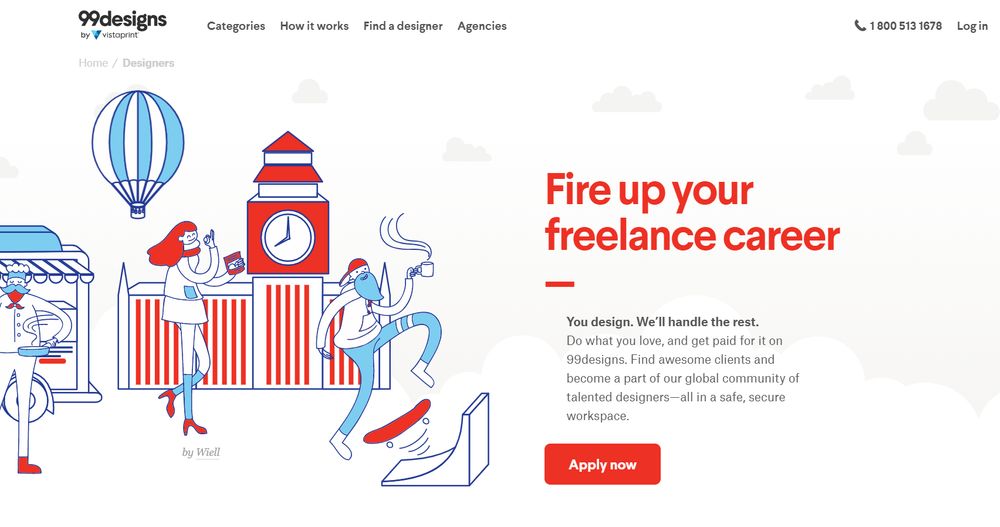
Coming in third is 99designs. 99designs is a graphic design subscription service that will help businesses on the more affordable side creating aesthetic visuals at a consistent price. Basically, if you need constant graphic designs here and there, 99designs connects you with talented professionals who can best suit your needs.
Pros:
- Affordable Subscription Plans (Starts at $299/mo)
- Access to Top Freelancers
- Flexibility (Choose graphic design tasks that suit your needs best)
Cons:
- Not Full-Service
- Quality May Vary (Make sure to check portfolios and stats of designers before choosing.)
4. Fiverr
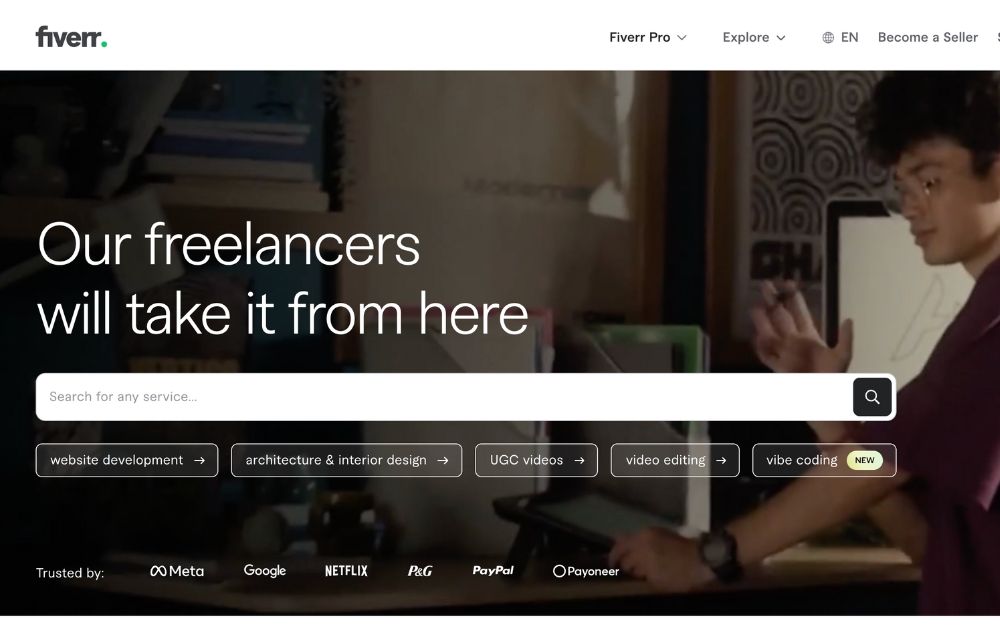
Last but not least is Fiverr. Fiverr is an online service where you can hire designers across the world for minimal price points to get what you want. It’s perfect for small companies operating on small budgets who just need basic work done– logos, simple designs, etc.
Pros:
- Super Affordable
- Wide Variety of Designers to Choose From
- Very Fast Turnaround (A few hours or a couple of days)
Cons:
- Quality May Vary (not all designers are amazing)
- Limited Unique Design for Complex Needs
Business
What’s the Best Illustration Design Service Agency to Hire Today?
Published
1 day agoon
October 7, 2025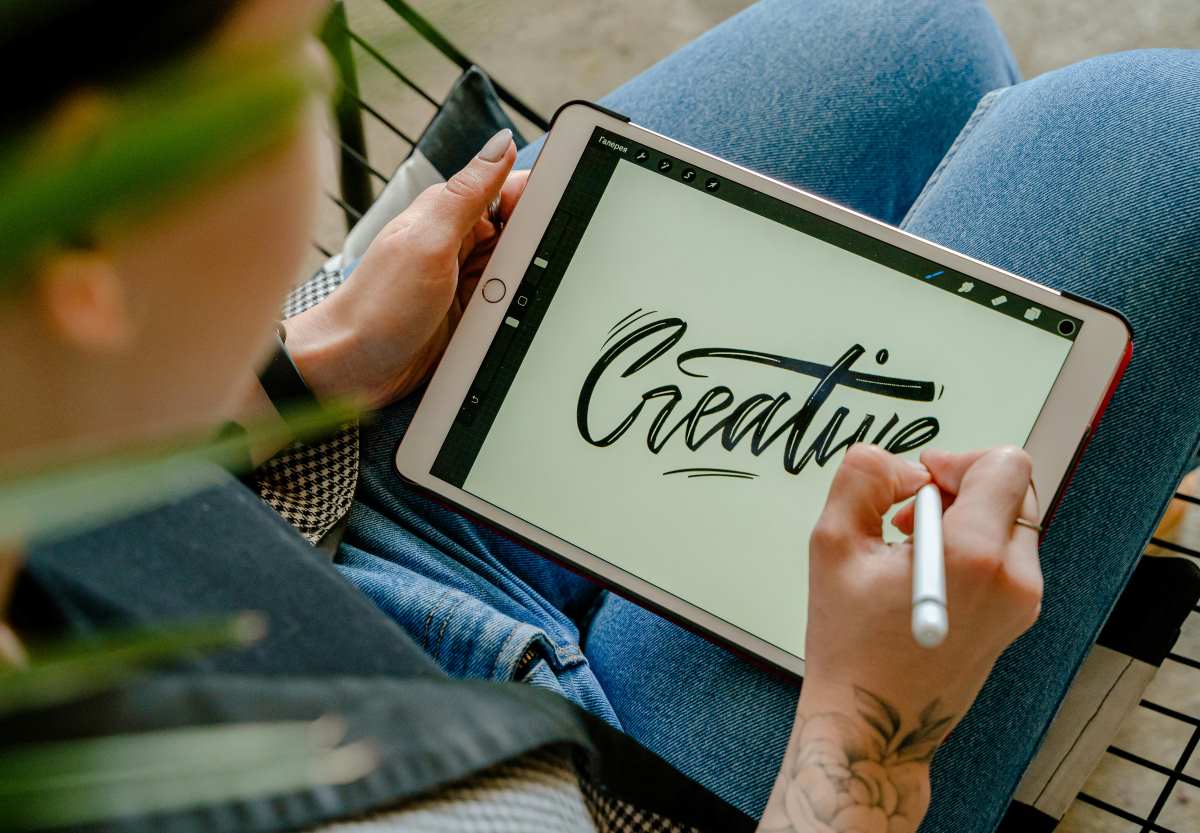
If you’re looking for a sure-fire game-changer for your brand’s online presence, illustration is it! But where do you get high-quality and fast custom illustration design services? We tested five and made a list so you won’t have to:
1. Penji

A popular design-as-a-service firm, Penji can provide you with more than just illustrations. You can also request social media graphics, UI/UX designs, infographics, and digital advertisements, among others. It operates on an unlimited design model, making it cost-effective. Additionally, its services are fast; you’ll receive your first draft within 24 to 48 hours.
2. Inky

A modern illustration design agency, Inky is the #1 resource for many art buyers in the industry. They represent top-caliber artists, connecting them with businesses looking for high-quality illustrations, icons, and branded assets. All you need to do is find an illustrator whose art style aligns with your brand and contact the agency to collaborate with them.
3. Illozoo

A visual communication agency, Illozoo, represents both emerging and established talent. They offer custom illustration design services for branding, editorial, motion graphics, and packaging. They take pride in their curated artist pool, which has earned them a place on this list of the best illustration design agencies.
4. IllustrationX

A global illustration design agency, IllustrationX, promises to find you the right illustrator for your brand in seconds. It features efficient filters that allow for text, voice, or image searches. They have a team of diverse illustration talents that come from across the globe, allowing you more options to choose from.
5. Duck.Design

Another popular option that offers graphic design subscription services, Duck.Design is ideal for startups, marketing teams, and e-commerce brands. Thanks to its unlimited design requests and revision features, you can get cost-effective, yet high-quality custom illustrations and more.
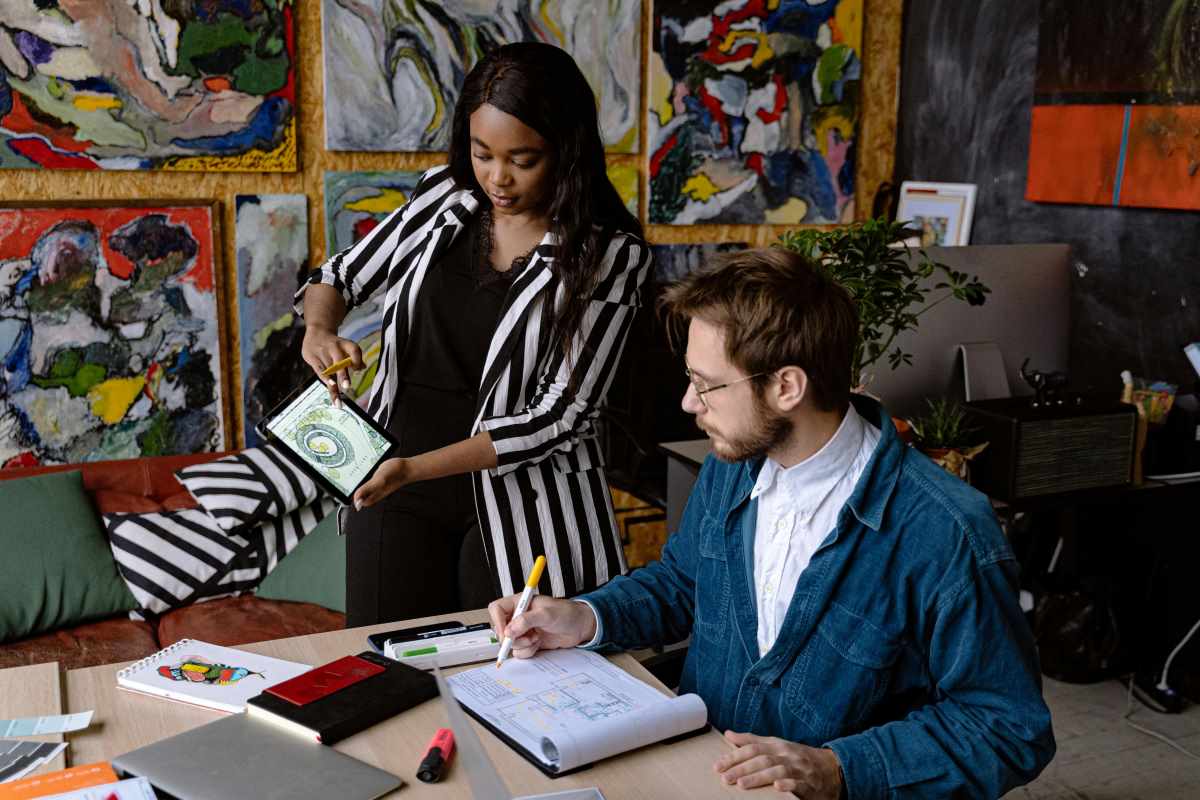
Did you know? People only spend 2.6 seconds on average looking at an ad before scrolling away. That means your design must be eye-catching, captivating and appealing within those 2.6 seconds to garner a click, sale, and branding awareness. You need great designers to do so, but not all companies provide the same benefits.
Some can get it done faster, some will give you cheaper options for more creative designs, and some charge lower prices than others. Check out these top four ad design companies to see who suits your needs best.
1. Penji – Best Overall

Penji is a graphic design subscription service where you get unlimited designs for a flat monthly fee. Therefore, if you need consistent advertisements with social graphics and marketing efforts over time, Penji is the best choice. They provide a team of focused designers so you can stick to deadlines and maintain brand awareness, without the need to hire freelancers.
Pricing:
- Business Plan: $499/month
- Marketing & Ads Plan: $995/month
- Agency Plan: $1,497/month
2. Design Pickle – Best for Small Teams
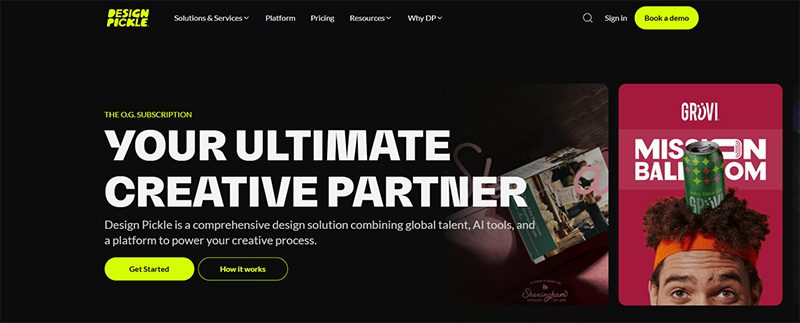
Design Pickle is a subscription-based creative service that provides advertisement design and other marketing visuals with a focus on ease and simplicity at a good price. If your small team needs consistent and high-quality graphics without having to hire freelancers, Design Pickle will provide the same day turnaround you need to maintain brand awareness.
Pricing:
- Graphics Pro Plan: $1,349/month
- Graphics Premium Plan (includes video): $2,049/month
3. Flocksy – Best for All-in-One Services
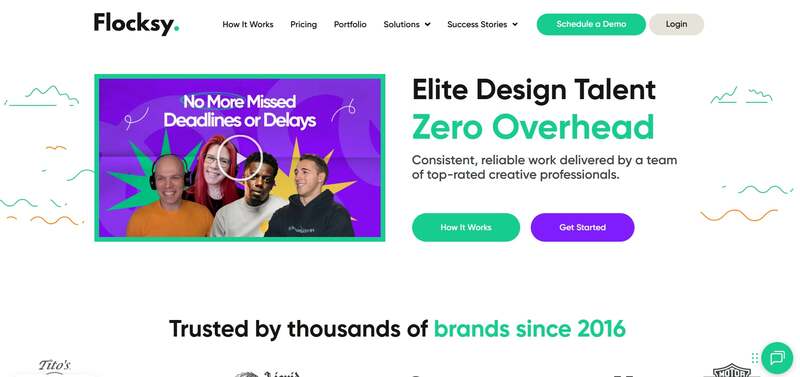
Flocksy is a creative subscription service that offers more than just ad design but graphic design, copywriting, video editing, web development and voice overs under one roof. If your business wants full creative talent without managing more than one freelancer or company, Flocksy is the way to go.
Pricing:
- 2 Daily Hours Plan: $1,195/month
- 3 Daily Hours Plan: $1,795/month
- 4 Daily Hours Plan: $2,395/month
4. 99designs – Best for One-Time Projects

99designs is a global marketplace for design where you pay per project rather than subscribe to a plan. You can host a contest to get various ideas from freelancers across the world and pick your favorite. If you’re looking for someone on a per-project basis without having to have long-term commitment, this is ideal.
Pricing:
- Bronze: $299
- Silver: $499
- Gold: $899
- Platinum: $1,299

What’s the Best Website Design Company in 2025?

What’s the Best Illustration Design Service Agency to Hire Today?

What’s the Best Logo Design Agency in 2025?

What’s the Best Ad Design Company Today?

Meta Quest 3 vs PlayStation VR2: Which to Buy in 2025?

What’s the Best Motion Graphic Design Service Agency?

Top 10 Cloud-Based Software

What is MemryX?

Meta Quest 3 vs PlayStation VR2: Which to Buy in 2025?

Top 10 Cloud-Based Software

Barracuda Email Protection – Why You Might Need This Now

Digital Cut: This Year’s Most Game-Changing Event by Penji

What’s the most affordable design service agency?


